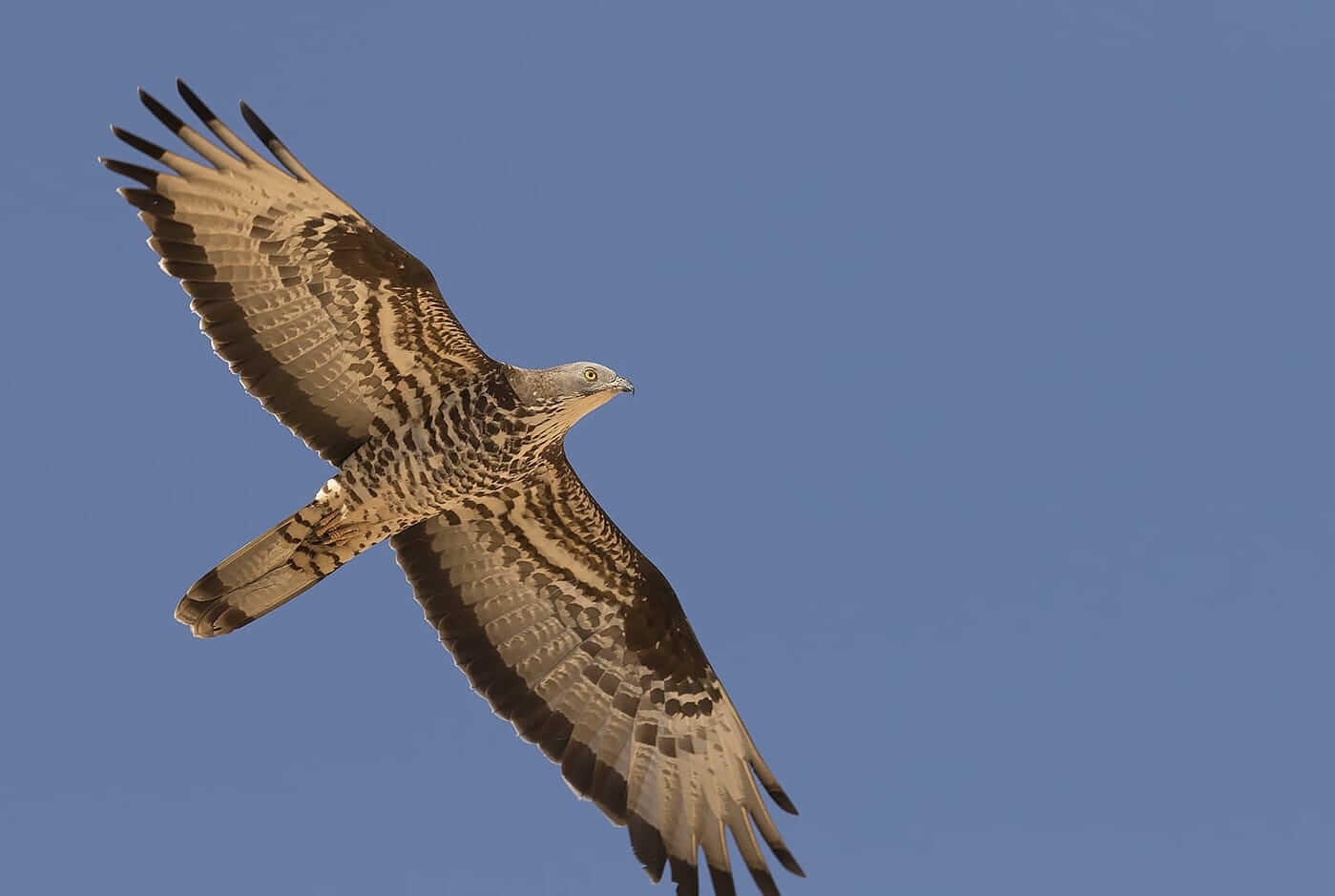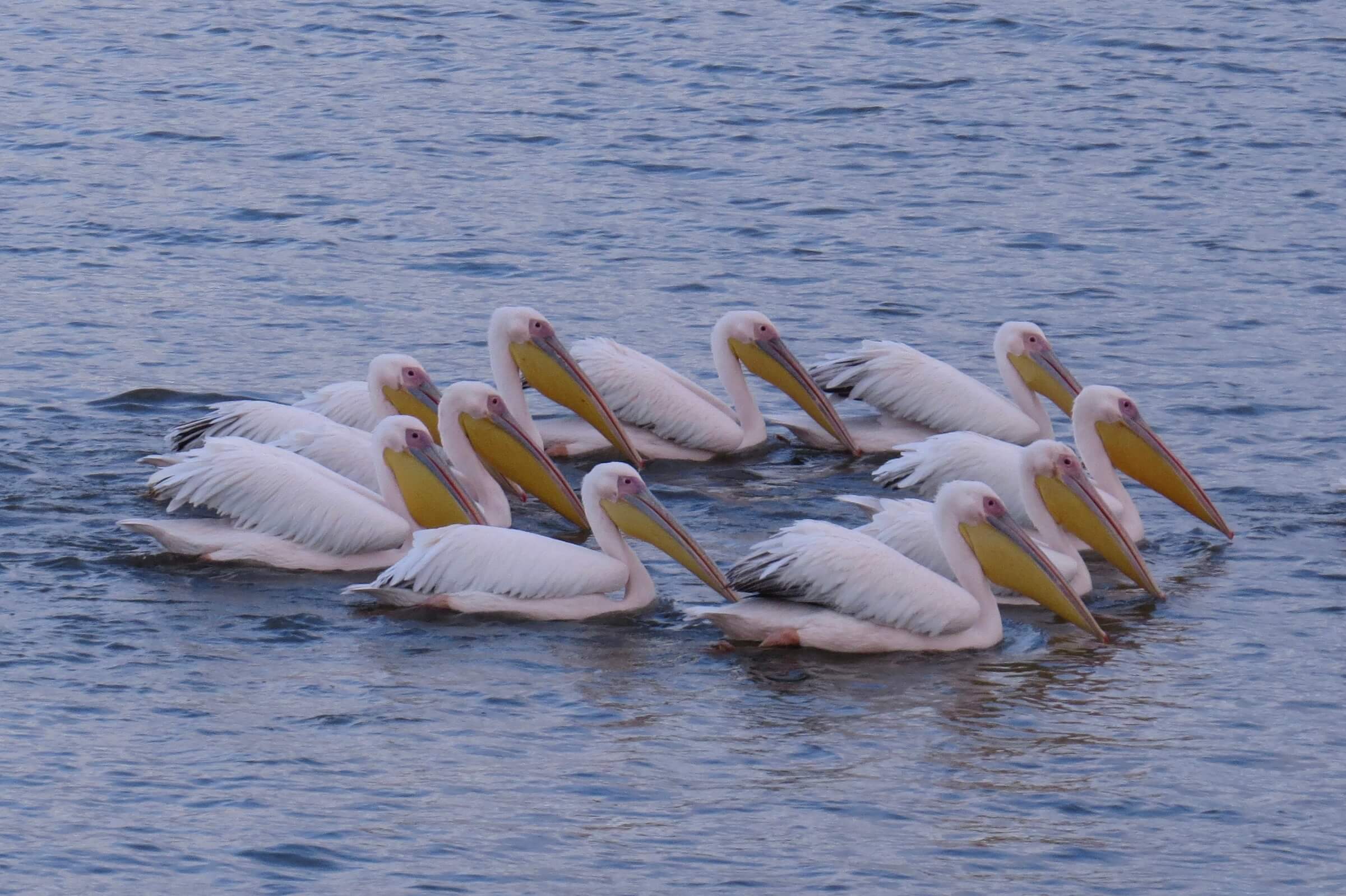A new Israeli study presents a solution to the many accidents between aircraft and winged animals, and for the first time succeeds in identifying with the help of radar flocks of large birds, which until now were considered "invisible"
By Reot Alon - Zivata, news agency for science and the environment

In March 2003 the then Chief of Staff Moshe (Bogie) Ya'alon join up for the flight of a Black Hawk helicopter - when a crane from a passing flock entered the windshield and smashed it. Thanks to the actions of the navigator and the pilot, all the passengers got out of the incident alive (which cannot be said about the crane). This accident is not an anomaly in the landscape - or in the sky; Israel's airspace is small, and in the fall and spring seasons, when half a billion migratory birds pass over the country's skies, their encounter with air force planes could be fatal.
While there are ways to locate small birds with radar, until today there was no possibility to identify the larger birds - the damage caused by the collision with them is the most severe. but now Researchers Israelis succeeded in developing a groundbreaking algorithm with the help of which it is possible to identify flocks of large birds with weather radars - thus helping to reduce such accidents.
Between the years 1997-1972 happened More than 3,000 collisions between air force planes and migrating birds, with two of them ending in the tragic deaths of two pilots and a navigator. Prof. Yossi Leshem from the Department of Zoology at Tel Aviv University and the Society for the Protection of Nature, who recognized the magnitude of the problem, published in 1999 study On the migration routes of the birds in Israel - whose findings were applied in the Air Force, and brought for a reduction of about 76 percent in the air accidents. However, the number of accidents is still large, and it is estimated that from 1968 until today, over 6,700 collisions between planes and birds have occurred in Israel.
as mentioned, The damage The donkey secrets The aircraft is caused by large birds, such as cranes, storks, pelicans, wood eagles, hornets and black swifts, which have a high body mass. This is both a heavy economic damage, the cost of which may reach for millions of dollars - and physical harm to humans, which can cause serious injuries and even death.
And yet, despite their size, there is difficulty in identifying these birds with weather radars. "Unlike songbirds, which migrate every day at sunset and whose large flocks look like a cloud of dust on radar - large birds fly in flocks of different sizes, not every day and not in the entire airspace," explains Dr. Inbal Shekler, one of the authors of the study, from the laboratory of Prof. Nir Sapir for the study of animal migration in the Department of Evolutionary and Environmental Biology at the University of Haifa. "Actually, today there is no tool that allows the Air Force to identify large flocks of birds in the sky outside the base areas. The challenge in the research we conducted was to develop a tool that did not exist until now.'
The forecast: flocks of birds
The new research, which Shkler conducted together with Prof. Nir Sapir and with the help of Tamir Neve, an entrepreneur in the field of algorithm development and Prof. Ilan Shimshoni, an expert in data mining and computer vision from the University of Haifa, and which was funded by the Air Force and the Data Science Research Center (DSRC) of the University of Haifa, focused In the development of a tool that will make it possible to identify the large birds. The researchers built an algorithm based on deep learning of images. "We were based on an existing model called U-Net, which was used mainly in medicine, and we adapted it to our needs," says Shekler. "The goal of the model we created is to determine whether a certain image is a flock of hummingbirds or not. For this purpose, we fed the algorithm thousands of images from radars, in which we manually tagged the birds - so that it would learn by itself the characteristics of these images.'

Sound simple? So that's it, no. "Since it is very difficult to identify flocks specifically with radar, we realized that tagging the images is a challenging task," says Shekler. According to her, the solution came from the taggers - who saw that it was easier for them to identify the movement of the birds when it was not a single image - but a video. This is because the birds migrate in fixed axes - in autumn, they fly from northeast to southwest. In addition, the researchers made use of various databases of the Society for the Protection of Nature and reports of birders in a dedicated WhatsApp group (which earned the appropriate name "Whats-Af"), to check on which days there is a record of migration, and how the flocks look in radar images these days.
It seems that the Sisyphean work did pay off, because the algorithm presents impressive data - it manages to identify about 93 percent of the bird flocks, and its false detection rate is less than 20 percent. According to Shekler, the model is in the stages of being implemented in the radars that the Air Force uses. At the same time, she and her colleagues are working on improving it: the model is based on migration images from the autumn season, and the next step is to teach it the spring season, in which the migration route is reversed.
Much more than a light stroke on the wing
It should be noted that the usefulness of the new algorithm is not limited only to the air force's flight planning. According to Shekler, the success of the model can improve the study of bird migration, which is currently based mainly on GPS transmitters attached to the back. "This is a fascinating field of research - but it is limited in terms of budget and quantity, since transmitters can only be connected to individual individuals in the band," she says. "This tool will allow us to monitor for the first time the movement of flocks that migrate through Israel over the years, and also contribute to the research that is being carried out in Europe and the United States - which will enable monitoring of the migration on a very broad scale."

Beyond that, birds today encounter many difficulties during the migration period - collisions with airplanes (or in the turbines wind) is just one of them. The climate crisis, for example, causes them arrive too early or late to their destinations and out of sync with their food sources, and together with the loss of the habitats in which they live, a bleak picture of their situation is obtained.
"We are changing the Earth all the time, and this has big - and often negative - effects on birds," says Shekler. This is where, among other things, the importance of technology comes in: there is no doubt that the development of additional tools such as the new algorithm will be able to help, for saving human lives, for research - and for preserving our unique natural values.
More of the topic in Hayadan:
